Shanghai Xunhui Environment Technology Co., Ltd. |
|
Polypropylene high pressure plate and frame filter press for sludge dehydrator membrane type
The membrane plate and frame filter press, is with automatic
plate pulling out device by mechanical arm. It saves labor cost.
It's feed from one corner, which are widely used in waste water or slurry treatment, industries from plating and metal finishing to chemical and food processing. Our filter Presses feature heavy duty steel construction with polypropene gasketed plates. These filter presses can be manufactured with manual or automatic closures, but always with a hydraulic cylinder for sure, high pressure closing. The filter pressescan be expanded for larger future capacity by building it in a larger skeleton with a distance piece. Once you are ready to expand, you can remove the distance piece and add the extra plates.
Work process
The diaphragm filter press comprises a set of vertical, juxtaposed
recessed plates, presses against each other by hydraulic jacks at
one end of the set. The pressure applied to the joint face of each
filtering plate must withstand the chamber internal pressure
developed by the sludge pumping system.
This vertical plate layout forms watertight filtration chambers
allowing easy mechanisation for the discharge of cakes.
Filter chlotes finely or tightly meshed are applied to the two groowed surfaces in these plates. Orifices feed the sludge to befiltered under pressure in the filtration chamber. They are usually placed in the center of the plates allowing a proper distribution of flow right pressureand better drainage of sludge within the chamber.Solid sludge gradually accumulate in the filtration chamber until the final compacted cake is formed. The filtrate is collected at the back of the filtration support and carried away by internal ducts.
Filtration cycle
Flow chart of squeezing press filtering and washing - Free flow type
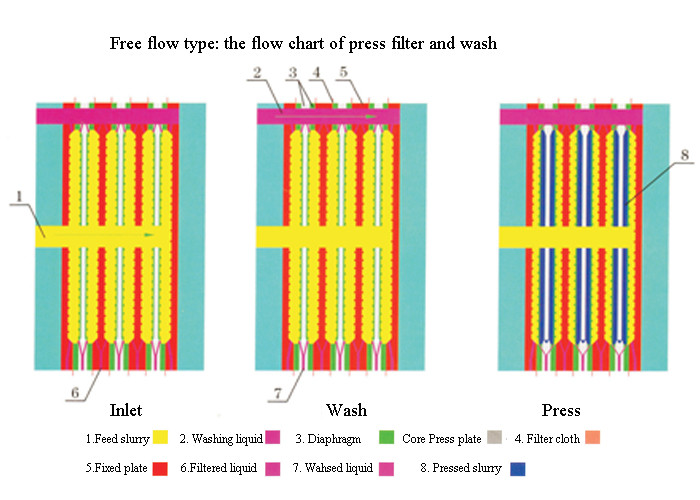
Flow chart of filtering, washing and crushing flow chart - Under current flow type
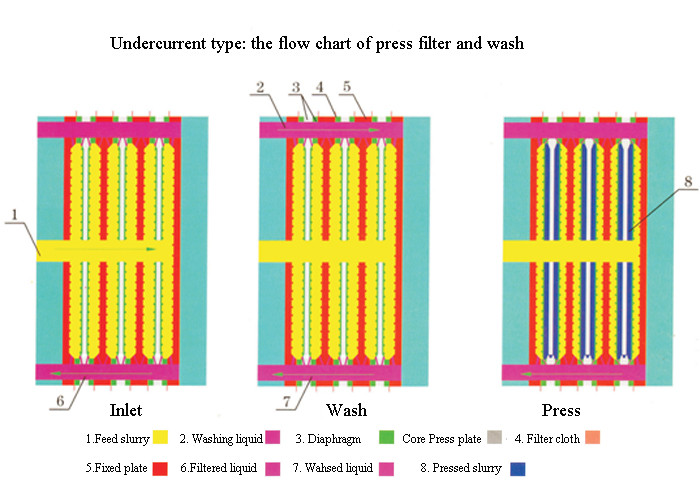
Filtration capacity
The production capacity of a filter press is somewhere between 1.5 and 10 kg of solid per m2 of filtering surface.
For
every the filter press model the chamber volume and the filtering surface depend on the number of plates in the
filer.
In practical terms pressing times are less then four hours.
Filtration time depends on:
One of the advantages of the filer press is that it can accept sludge with average filterability. It is always advantageous to
optimally thicken sludge before filter press operations. Although sludge presenting a high filterability enables better production
capacities, a filter press still accepts sludge with low conditioning precision. This tolerance means that the device offers
greater owerall operational safety.
Data sheet
| Model | Filter area (㎡) | Volume of filter chamber | Thickness of plate /frame (mm) | Pressure in filter chamber (Mpa) | Work temperature ℃ | Nos of filter plate/frame | Motor power | Dimensions (mm) | GW (kg) |
| XAYG800-1 | 10 | 150 | 65/60 | <0.8 | <70 | 5/4 | 4 | 2620x1150x1200 | 2200 |
| XAYG800-2 | 20 | 300 | 65/60 | <0.8 | <70 | 10/9 | 4 | 3255x1150*1200 | 2550 |
| XAYG800-3 | 30 | 450 | 65/60 | <0.8 | <70 | 15/14 | 4 | 3890x1150*1200 | 2920 |
| XAYG800-4 | 40 | 600 | 65/60 | <0.8 | <70 | 20/19 | 4 | 4525x1150*1200 | 3300 |
| XAYG800-5 | 50 | 750 | 65/60 | <0.8 | <70 | 25/24 | 4 | 5160x1150*1200 | 3900 |
| XAYG800-6 | 60 | 900 | 65/60 | <0.8 | <70 | 30/29 | 4 | 5795x1150*1200 | 4350 |
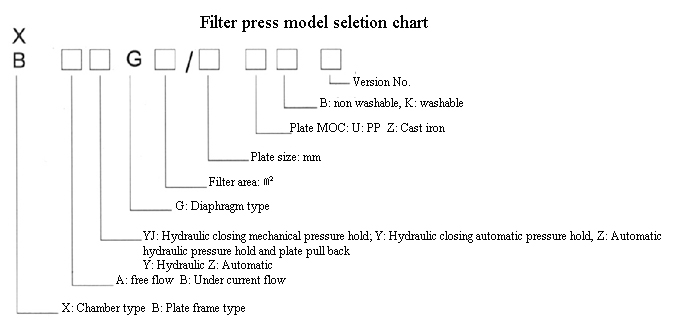 Pipe line diagraphm
Pipe line diagraphm
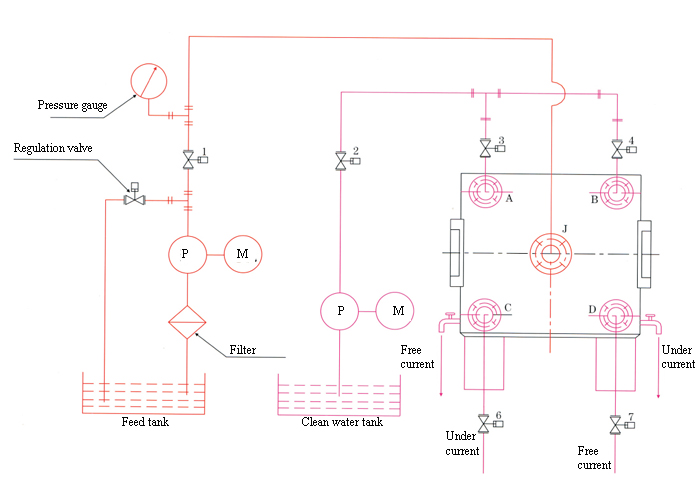
Performance
The filter press is suitable for almost all types of sludge:
Hydrophilic organic sludge: inorganic
conditioning is often recommended to enable satisfactory cake
release due to minimal
aderence to filter cloth.
Hydrophilic inorganic sludge: the filer press
generally requires the addition of lime only.
Hydrophobic inorganic sludge: it is very dense
and ideal for the filter press. It is dewatered without any
preliminary conditioning.
Oily sludge: the filter press can be used to
treat sludge containing light oils, the presence of grease can
sometimes impair the
smooth running of the filter; clothes have to be
degreased at frequent intervals.
Accessories
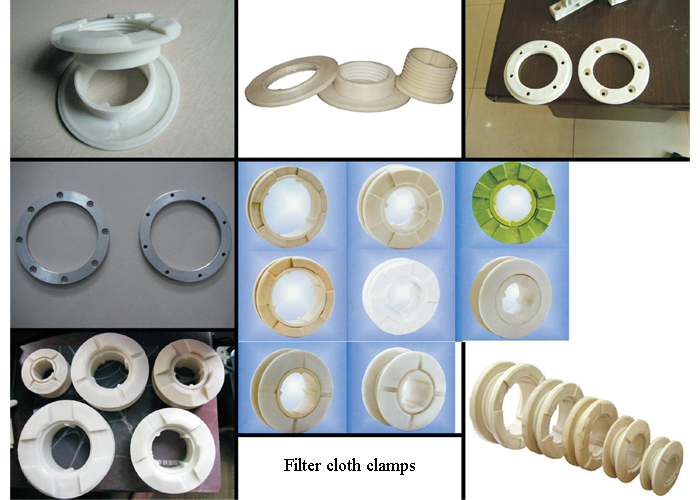
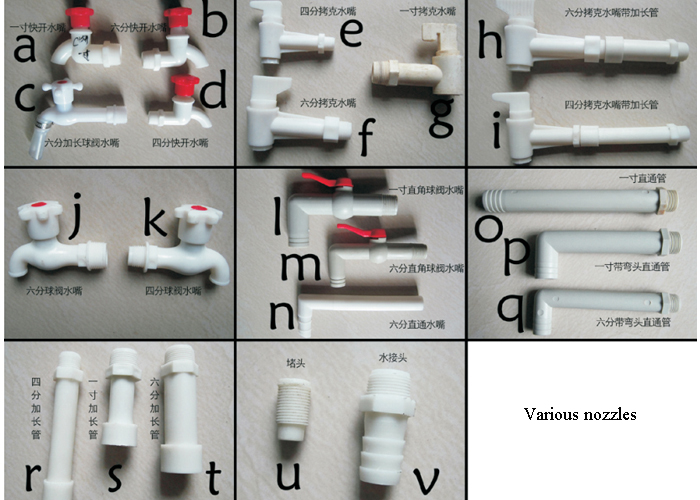
Competitive advantage
Quality - Rapid filtration, highly automated, stable performance, easy
operation and equipped high temperature, high pressure,
anti-corrosion, reliably sealing filter plates. We strictly execute
ISO9001 quality control system, striving to offer our client the
products with advanced technology and best quality to achieve the
best filtration.
Service We always have the faith that customer is highest. Before selling
out products, we offering technology advice, solution design and
give guidance on installation and commissioning. We always follow
the using status of our machine, striving to offer all-round
premium service.
Technology We constantly adopt advanced technology for filter press to make
the products apply with the most innovative science &
technology. We also can make custom designed filter press, filter
plates and accessories. To meet the market demand, we brought novel
& leading technology filter presses together with German
designers.